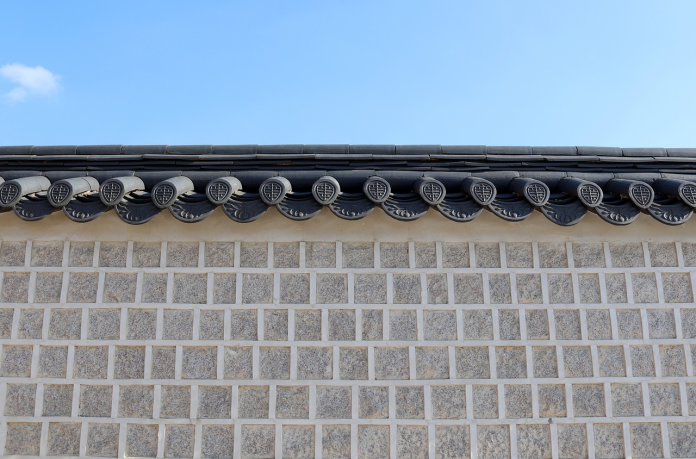It is the top layer of protection on a building or other structure. It can be made of various materials, ranging from composition shingles to laminated architectural shingles. It can also be made of wood or metal. Roofing is crucial to the overall structure because it protects from the elements and keeps the building dry.
Table of Contents
Basics
It is a basic element of architecture, covering the top part of a building. It is the main layer of protection from the elements, and it can come in different forms, such as flat, vaulted, pitched, or domed. Its form and material depend on the building’s purpose and aesthetic and technical considerations.
Materials can vary widely, depending on the type of climate and the availability of natural resources. According to this article, in Asia, many homes are constructed of bamboo, which is used as the outer layer and support structure. This material is incredibly durable, making it one of the most common materials.
The material is held together with fasteners. For asphalt shingles, there are specialty nails, while for tiles, they are metal fasteners. In addition to fasteners, these materials are often covered with tar or glue to prevent water penetration. Other materials, such as membrane roofing, are made of thermoplastic, synthetic rubber, or modified bitumen.
Styles
There are a few different types of materials, and the choice depends on your needs and budget. You can choose between composition shingles and architectural laminated shingles. Architectural laminated shingles are specially engineered to provide architectural interest in your house.
They are a departure from the typical three-tab shingles that have been around for centuries. They are more durable and can replicate the appearance of genuine cedar shakes or slate tiles. Moreover, they have none of the maintenance hassles or flammability issues associated with authentic wood.
In North America, dimensional shingles are the most common type of roofing material. They are more durable than composition shingles and are made of two layers of material. Additionally, they weigh more than standard three-tab shingles. They also offer better warranty protection.
Architectural shingles are the most expensive type of shingles, but their longevity is higher than that of composition shingles.
They are made of multiple layers of asphalt and granules that are more durable than ordinary shingles. In fact, if properly installed and cared for, these shingles can last for up to 50 years. These shingles are also the most affordable and easiest to maintain among the different types.
Materials used in construction
Whether it is a commercial building or a residence, concrete is highly resistant to hail damage, fire, and the elements. It also sheds snow readily, making it an extremely adaptable material for any climate. Even though many people may associate concrete with artificial materials, in fact, concrete is one of nature’s most sustainable products.
It is environmentally friendly, energy efficient, and recyclable. However, concrete is not completely waterproof. While a roofing company can protect a property from many natural elements, it does not repel water. It is also susceptible to leaks, which can get worse with time. These leaks are sometimes hard to detect with the naked eye, but the water damage spreads quickly.
Eventually, this can compromise the structural integrity of the building It works best when it is combined with concrete walls, floors, and support columns. A concrete roof is a good choice for a flat roof, but it is more expensive than traditional materials.
However, if properly installed, a concrete roof can last for decades with little maintenance. They are especially useful in cities where rainy weather is a constant threat. Heavy rains can damage a roof and even lead to its collapse. However, concrete roof tiles are more resilient and can withstand torrential rains.

Fixing a problem
Often, the first sign of a need for repair is visible damage. This may be a visible problem like leaks or a missing shingle. Some common visible signs of roof damage include missing or wet shingles, granules in gutters, blistering or peeling paint, sagging or buckling decking or rafters, and water stains on interior walls. In severe cases, repairs may be required if shingles are leaking through the attic.
If possible, remove any loose shingles to get the process started. Then, place an underlayment material over the damaged area. Using the correct nails, fasten the shingles onto the underlayment. Afterward, secure them with cement adhesive. If the shingles are still losing, you can use a pry bar to loosen the tabs.
Depending on the damage, your contractor like Lanes Contracting & Roofing may decide to use different techniques. In some cases, a contractor may replace damaged flashing, caulk or tarring, and replace missing or broken shingles.Damaged vent boots will also be replaced, if necessary. Damaged shingles can be replaced, though it’s best to hire a contractor who uses the same brand of shingles as the rest of your house.
Performing repairs on your own is not hard, but it’s better to hire a professional to make sure it’s done right. A small patch can cost as little as $2 to $4. However, if the damage is severe, you can hire a professional for $1,500 or more (When repairing your house, it’s important to get the problem fixed as soon as possible. Read here why professional service is important https://mydecorative.com/important-benefits-of-hiring-a-professional-roofing-contractor/
The first step in repair is to inspect the roof from the ground. This is important because a damaged roof can lead to more serious problems down the line. If left untreated, it can lead to structural issues that will end up costing you a lot of money. This way, you can save your house and save a lot of money on structural repairs in the future.
Other signs that repairs are needed include sagging decking. As excess weight will push down into the attic between the trusses, causing the decking to sag. This may start out small, but over time, the sagging can increase until it looks wide enough to warrant replacement or an entire overhaul, which can be quite costly.








